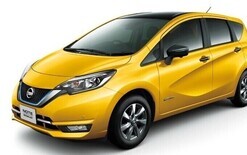Counting cost of CCS penalties

The Imported Motor Vehicle Industry Association (VIA) is warning politicians that rising compliance costs are making once-affordable vehicles increasingly unattainable for ordinary households.
Greig Epps, VIA’s chief executive, says global trends and domestic regulations are contributing to price pressures on used imported vehicles.
“The clean car standard [CCS] is not fit for purpose when applied to used imports,” he adds.
“It was designed for new vehicle markets where manufacturers can generate credits through increasing production of low-emission models. Used importers cannot do that because we work with what already exists overseas.”
He raised concerns about the CCS when speaking on VIA’s submission to the transport and infrastructure select committee, which is considering proposals put forward in the Land Transport (Clean Vehicle Standard) Amendment Bill (No 2).
VIA says total imports have risen 12 per cent on last year, but this is from historic lows and the recovery since Covid has been uneven.
Epps, pictured, notes it is odd for new vehicle registrations to be leading the rebound in the current quasi-recessionary context while used imports remain stalled.
“This is because CCS penalties are soaking up the few remaining credits held by used importers,” he explains.
“By the end of this year, penalties will completely offset the credits available to used importers.
“Around half of penalised stock carries extra costs of over $1,000. On a $12,000 car, that is often the difference between yes and no for a buyer.”
VIA’s submission to the select committee points out the average retail price for a used import in New Zealand has held steady at about $15,000 for several years.
Prices are inelastic because Kiwi wages remain low, importers have already trimmed costs as much as possible through vehicle age, mileage, and auction grade.
As a result, VIA highlights that additional penalties or costs are passed through to customers.
Epps says retail sales data shows the “sweet spot” for affordability, a nine to 10-year-old car priced around $15,000, is disappearing.
Besides existing CCS levies, the sector will soon face further pressures such as shifting to Euro 6D emissions criteria and proposals to mandate some safety features.
VIA warns that by 2028, up to 75 per cent of currently viable models could be ruled out by overlapping age and emissions limits.
Epps, who addressed the select committee on October 9, says when affordable used imports disappear, households keep older, higher-emitting vehicles longer.
“It slows the very emissions progress the policy was supposed to accelerate,” he adds. “Families are being priced out of safer, lower-emission options.”
VIA is calling for the government to create separate CCS targets for used imports based on real supply conditions in Japan, where most used vehicles originate.
“This would align targets with what is available rather than penalising vehicles that meet family needs. An import should be better than the vehicle it replaces,” says Epps.
VIA has also reiterated its desire for the target weight adjustment to be removed from the CCS, noting the current formula rewards heavier new vehicles and penalises smaller, lighter used ones.
It also wants penalty and credit settings to be reviewed annually, which would allow adjustments as newer, cleaner vehicles enter the Japanese used market, ensuring emissions targets remain achievable without cutting supply.
Epps says the solution for adjusting government regulations is not to abandon environmental goals but to tailor them.
“We support cleaner, safer vehicles. But the policy cloth must be cut to fit the market we actually have, not the one we hope for in 10 years’ time.”





